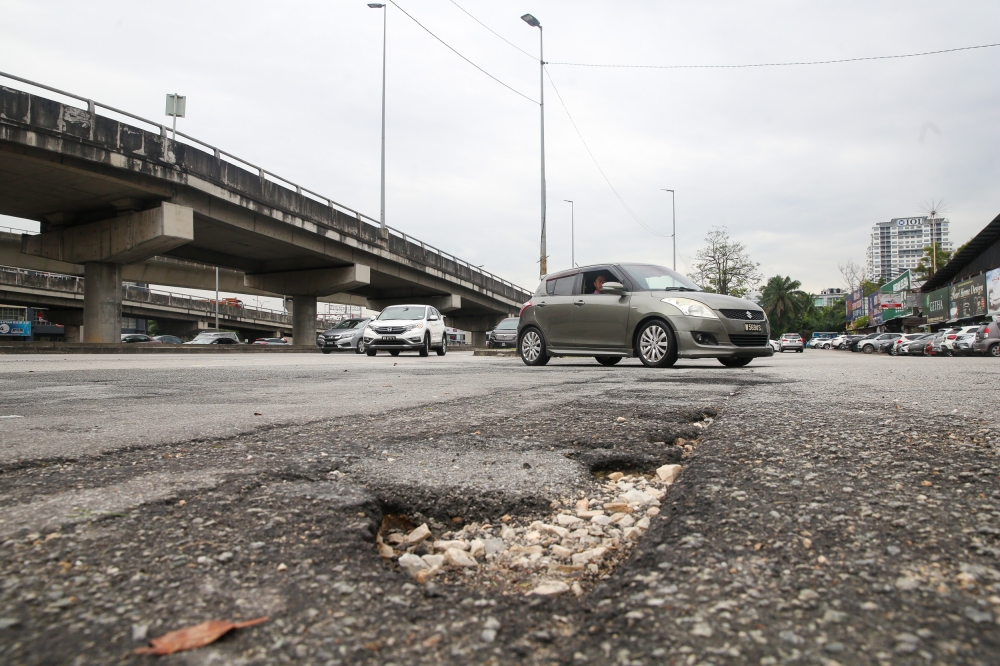KUALA LUMPUR, April 9 — Navigating Klang Valley roads has become a daily challenge for commuters like Faris Mohamad, who frequently faces potholes and erratic drivers on his journey from Setapak to Petaling Jaya.
His morning routine is simple — leave the house early to allocate enough time to brace himself for the unpredictable road conditions all along Jalan Genting Kelang, Jalan Pahang, all the way until he reaches his office in Section 13 in Petaling Jaya.
“The traffic is bad, but what scares me most are the deep potholes, sudden lane changes from drivers avoiding them, and reckless motorists cutting lanes without signalling,” said Faris when contacted by Malay Mail.
When it rains, puddles often disguise deep cracks in the road, making them even more dangerous, the 32-year-old said.
While his motorcycle has in the past suffered major damage from uneven roads, what haunts him more are two fatal accidents caused by potholes.
In January 2021, a 75-year-old motorcyclist, Ho Yan Yee, reportedly died after hitting a pothole on Jalan Tengah while heading towards Mid Valley Megamall.
It was reported that Ho lost control of his motorcycle upon encountering the pothole and was pronounced dead at the scene.
In the same year, an accident occurred in Mutiara Damansara, where a 31-year-old GrabFood delivery rider died after his motorcycle hit a pothole on Jalan PJU 7/2.
The rider lost control of his vehicle and crashed after hitting a pothole, resulting in immediate death.
“The roads aren’t improving. Today, it may be someone else’s life taken, but it could be mine tomorrow,” said Faris.
Faris’ experience is not unique as road safety remains a major concern in Malaysia, with authorities acknowledging the worsening conditions.
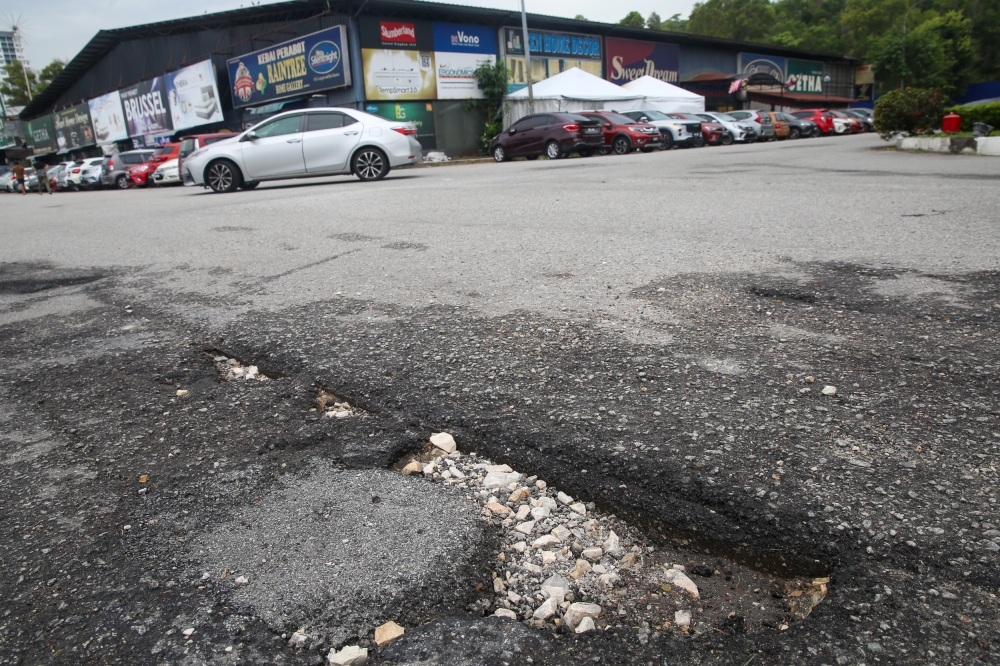
Potholes in need of fixing in Klang Valley roads. — Picture by Choo Choy May
So why are Klang Valley roads in such poor condition?
According to Works Minister Datuk Seri Alexander Nanta Linggi, the roads in the country are ageing.
At the same time, the ministry is lacking in funds to carry out optimum road repairs versus the number of roads that need fixing.
During a recent meeting with the Prime Minister Datuk Seri Anwar Ibrahim, Nanta said the country’s road condition was one of the main things discussed and the Prime Minister has acknowledged the matter.
“So, in one year we need about RM4 billion if we were to do the best quality of maintenance.
“But every year, through the Budget, we only receive about 30 per cent, so you can imagine the widening gap,” Nanta told Malay Mail.
He said during his meeting with the prime minister, he had emphasised that in future Budgets, the ministry should get more allocation for the purpose of road maintenance.
“He understands the matter and is very positive about helping us out, because he also wants the roads to be safe,” Nanta added.
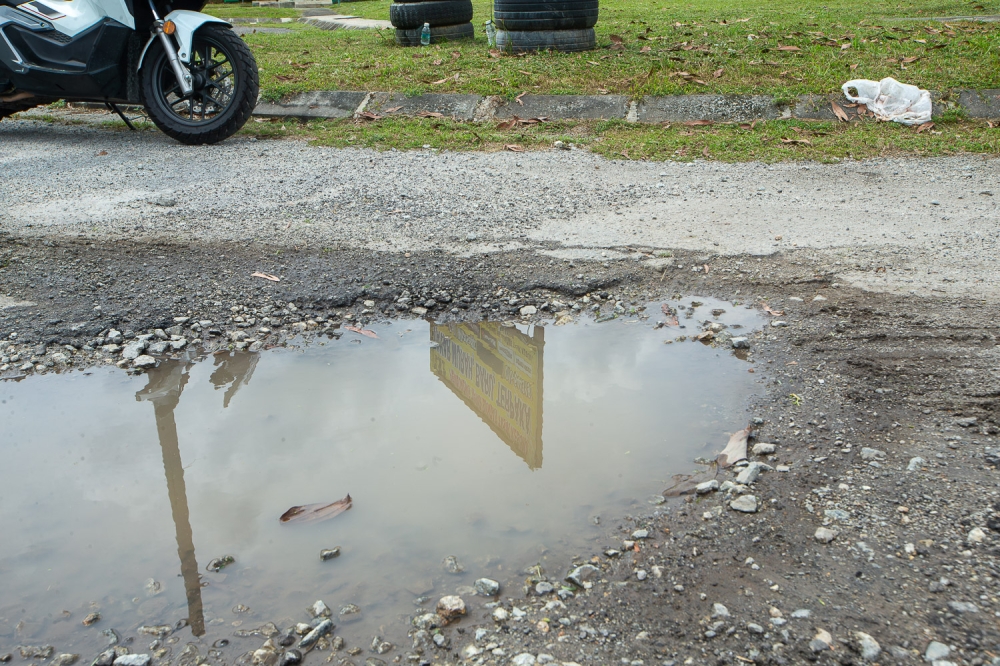
Heavy rainfall weakens roads over time as water seeps into cracks, accelerating pothole formation. — Picture By Raymond Manuel
But is this the only reason contributing to poor road conditions?
Universiti Pertahanan Nasional Malaysia Civil Engineering Department Faculty of Engineering Associate Professor Ng Choy Peng said one major cause of the poor road conditions in the Klang Valley is excessive rainfall.
Asphalt is a mixture of aggregates, binder and filler used for constructing and maintaining roads — what people commonly refer to as “tar road”.
“While people usually refer to it as ‘tar road’, our roads are actually made from either bitumen or asphalt, and what happens when there is heavy rainfall is that, for example, asphalt, these roads are porous and absorb water.
Heavy rainfall weakens roads over time as water seeps into cracks, accelerating pothole formation.
“Over time, the pressure from vehicles causes the weakened areas to break apart, forming potholes,” Ng told Malay Mail when contacted.
The quick fix is to fill the pothole, but this creates uneven surface and over time, the patch deteriorates and the cycle continues, Ng said.
She also explained that freshly paved roads need time to “set”.
“When traffic moves on fresh pavement too soon, the surface weakens. That’s why you see roads ‘sinking’ and becoming uneven over time,” she said.
Climate change also plays a role in further damaging the roads.
“When it rains, drivers slow down and the traffic load increases.
The manhole dilemma
As for awkwardly placed manholes in the middle of roads, Ng explained that manholes were originally on road shoulders but were not relocated when roads widened, leading to misalignment issues.
“Proper relocation costs money. It has to be done, but it isn’t.
“These manholes also cannot be covered up as they are needed for scheduled utilities maintenance work,” she said.
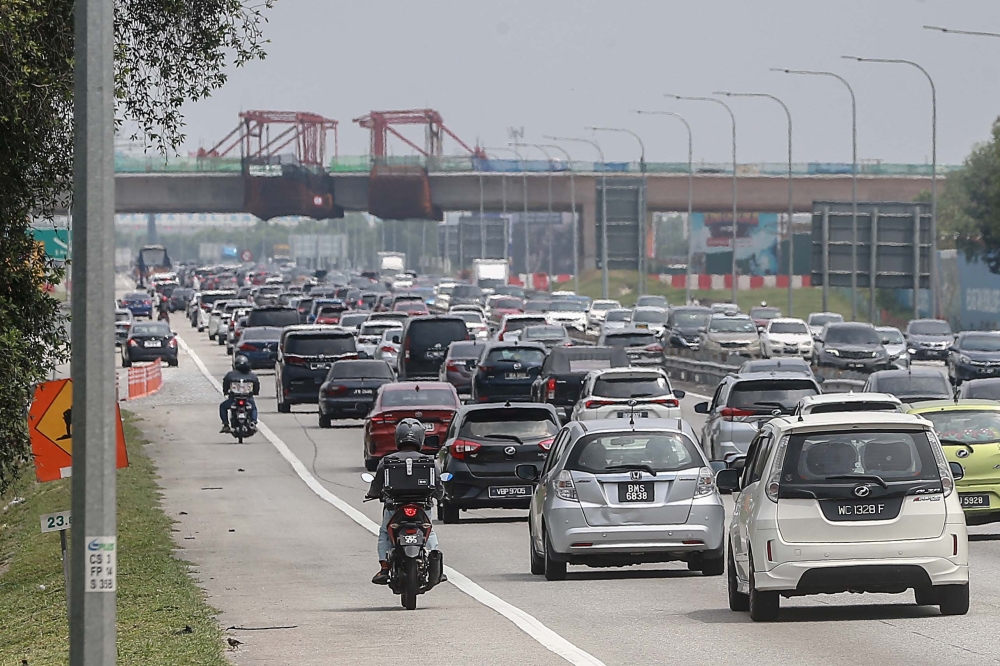
Over the years in Klang Valley, the number of vehicles has increased tremendously, leading to much longer traffic congestion. — Picture by Sayuti Zainudin
Too many vehicles also worsen road conditions
Over the years in Klang Valley, the number of vehicles has increased tremendously, leading to much longer traffic congestion; however, the roads have not been upgraded.
“Our roads, those that are made with bitumen — will age under the hot sun — so from time to time, the authorities need to carry out maintenance work by laying a thin layer of bitumen.
“But because this isn’t done regularly, what happens during traffic congestion is that, as the traffic load on the road increases, it weakens the road structure, especially with more heavy vehicles on the road for longer hours now,” she added.
That said, some may compare the road conditions in Kuala Lumpur and find that they are much worse than those in Selangor. Ng said this is due to population density.
“Where there are fewer vehicles, the road condition is always better than a heavily congested area,” she said.
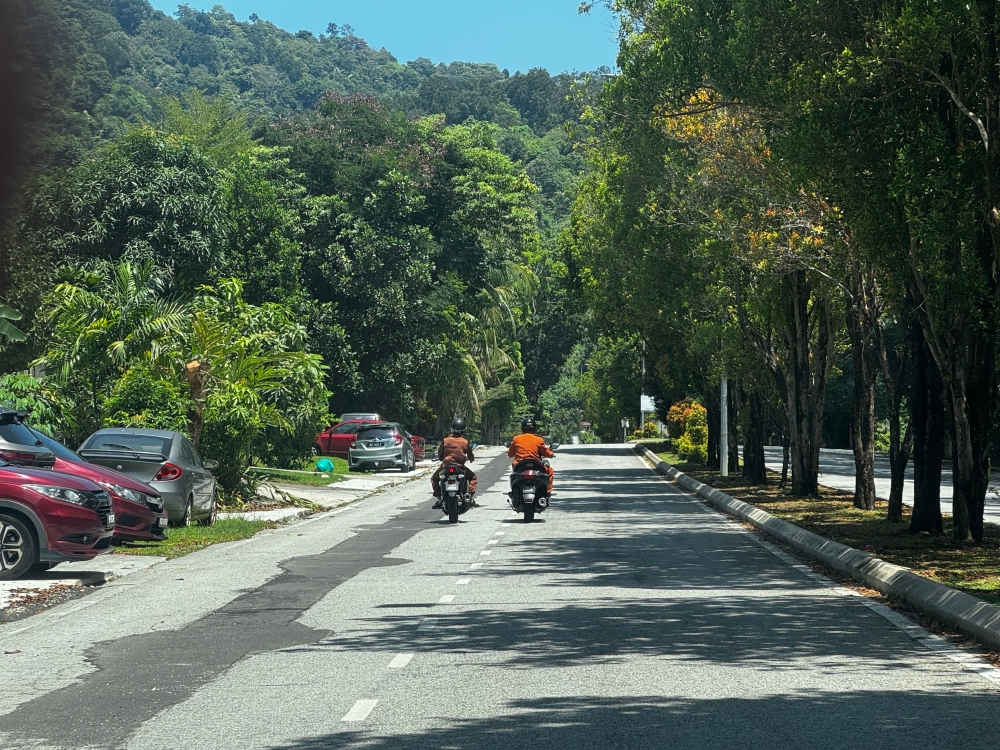
Town council roads were left with uneven patches after utilities maintenance works were completed. — Picture by Soo Wern Jun
Who repairs which road and where
When it comes to roads in Malaysia, there are different kinds of roads, Associate Professor Law Teik Hua from Universiti Putra Malaysia explained.
The highways are managed by the highway concessionaires, federal roads — that were built by the British — are managed by the central government, urban roads are managed by town councils, and then state roads are managed by the respective state governments.
“Some of the roads are placed very close together, that’s where the respective authorities need to sit down together to find a resolution on how best to fix road damage.
“When they find a solution, they will be able to share all the burden of road maintenance works,” he added.
Agreeing to this, Ng said utilities maintenance work need to be done hand in hand with road repair experts as currently, what is observed on ground reflects a lack of following through by relevant parties.
“The party that does the utility maintenance work only has the expertise for utility maintenance, but they don’t have the expertise to repave the road after they have dug it up.
“The one who has expertise in road maintenance must come in and ensure that the roads are resurfaced once the utility maintenance work has been completed,” she said.
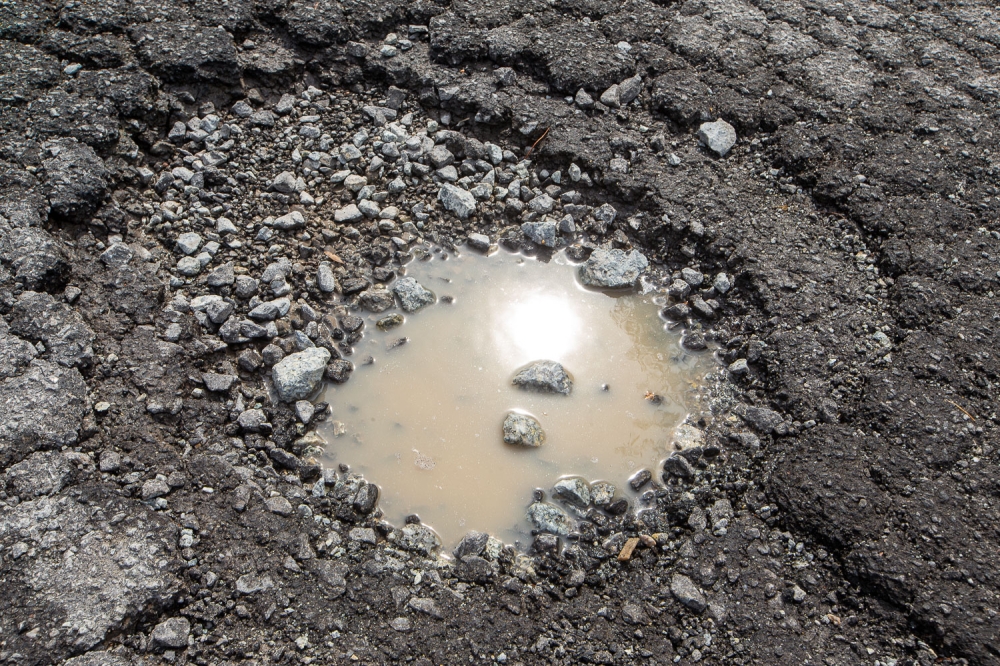
A pothole is seen on a damaged road in Kuala Lumpur, posing a risk to motorists and pedestrians February 18, 2024. — Picture By Raymond Manuel
Moving forward
Law said one remedy to this situation could be the authorities investing in more advanced methods to keep up with the growing number of vehicles.
He said among others, there is the lack of a real-time road condition database.
“You sometimes see roadworks on perfectly good roads while pothole-ridden roads go unfixed.
“I have asked some of the contractors, they told me that they are just following orders.
“This shows that the authorities lack proper data to monitor where repairs are actually needed,” said Law.
Instead of relying on public complaints, Law has suggested that the government invest in a real-time data monitoring system to predict when repairs are needed so that they can prevent accidents before they happen.
Ng concurred, saying that while road repairs are ongoing, poor execution is a bigger issue.
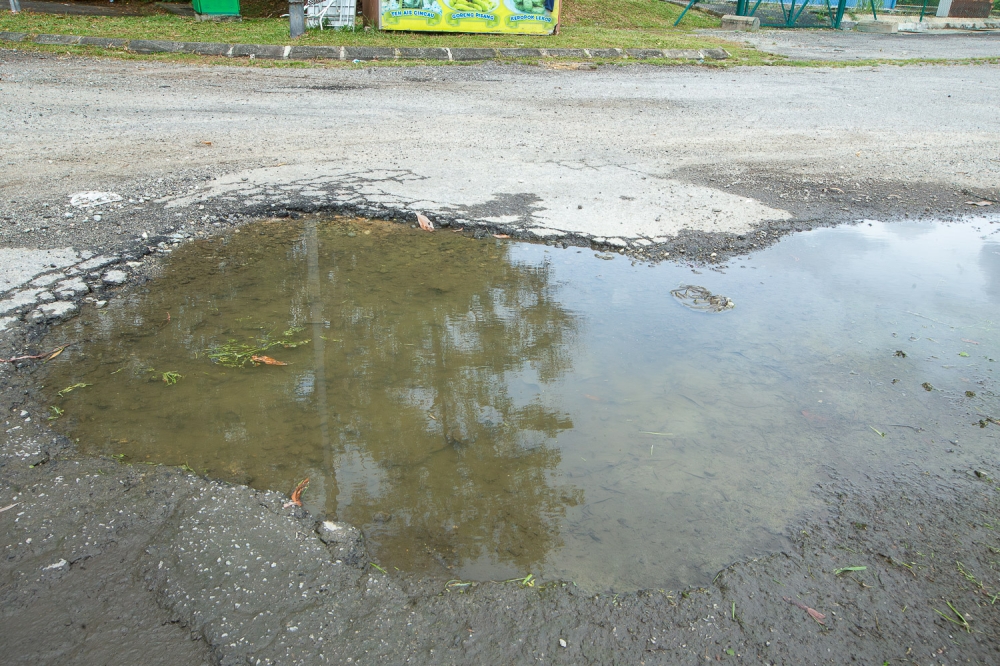
Instead of relying on public complaints, Law has suggested that the government invest in a real-time data monitoring system to predict when repairs are needed so that they can prevent accidents before they happen. — Picture By Raymond Manuel
“What is lacking now is an agency that monitors these repair works. The authorities can carry out repair works, but it has to be done according to the specifications set, otherwise the road repairs won’t last,” she said.
Bernama reported that a total of 223 accidents caused by various road issues including potholes and cracks due to constructions were recorded in Selangor between 2018 to 2020. This data was reported by the police.
Of the total number of accidents, 148 were fatal, 34 caused serious injuries, 37 resulted in minor injuries, and four caused no injuries.
A study by the Malaysian Institute of Road Safety Research (Miros) had found that while human behaviour remains the primary cause of road accidents, the condition of road infrastructure significantly contributes to accident rates.
In 2024, Malaysia recorded over 530,000 road accidents by October.
While comprehensive data attributing accidents solely to poor road conditions in 2024 is limited, studies indicate that factors such as potholes and uneven surfaces significantly contribute to road incidents.

